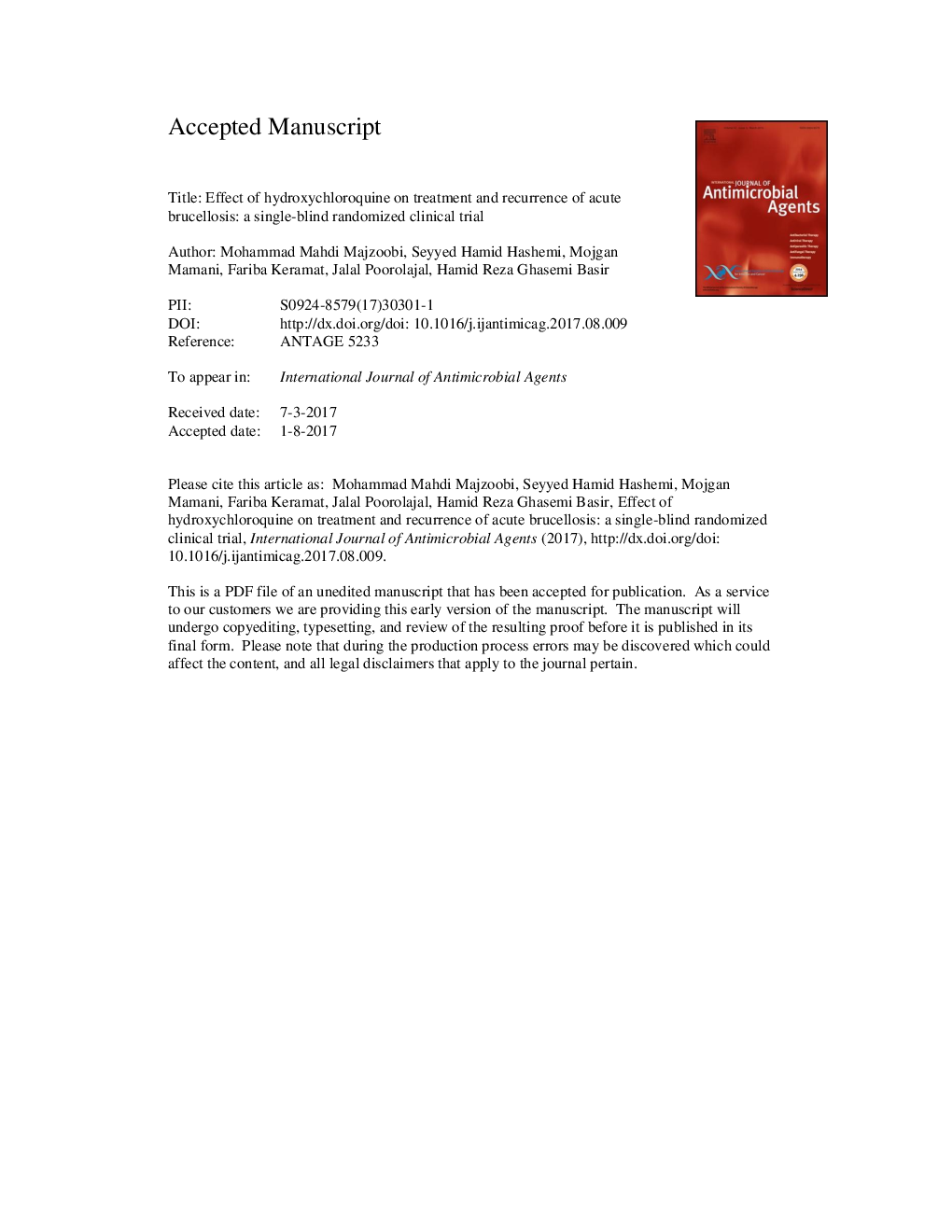| Article ID | Journal | Published Year | Pages | File Type |
|---|---|---|---|---|
| 8738613 | International Journal of Antimicrobial Agents | 2018 | 18 Pages |
Abstract
A total of 177 patients with acute brucellosis were randomly assigned to one of two treatment groups: doxycycline-streptomycin (DS) and doxycycline-streptomycin-hydroxychloroquine (DSH). Clinical symptoms and signs, serological tests, and side effects of therapy were compared between the two groups during the treatment course and at three and six months after the end of drug therapy. Of the 177 patients, with a mean age of 40.5â±â16.9 years, 66.1% were males. The mean duration of clinical signs prior to admission was 43.4â±â41.1 days. Appropriate clinical responses, relapse, treatment failure, and adverse drug reactions were seen in 98.9%, 1.2%, 0.0%, and 12.6% of patients, respectively, in the DSH group vs. 86.7%, 11.6%, 2.3%, and 19.8% of patients, respectively, in the DS group. There were significant differences in clinical response and relapse rates between the two groups. The addition of hydroxychloroquine to a doxycycline-streptomycin regimen appears to increase the efficacy of treatment, accelerate improvement of clinical symptoms, and significantly reduce the rate of relapse of brucellosis.
Related Topics
Life Sciences
Immunology and Microbiology
Applied Microbiology and Biotechnology
Authors
Mohammad Mahdi Majzoobi, Seyyed Hamid Hashemi, Mojgan Mamani, Fariba Keramat, Jalal Poorolajal, Hamid Reza Ghasemi Basir,
